The godfather of Washington wine
The best small-town restaurants in Washington
Vietnam's first wine importer

Games and puzzles related to this issue
magazine
DELICIOUS RECIPE INSIDE! magazine
Ready for a delicious road trip? We've compiled our five favorite small-town restaurants in the state – and no matter where you live, these spots are worth the drive!
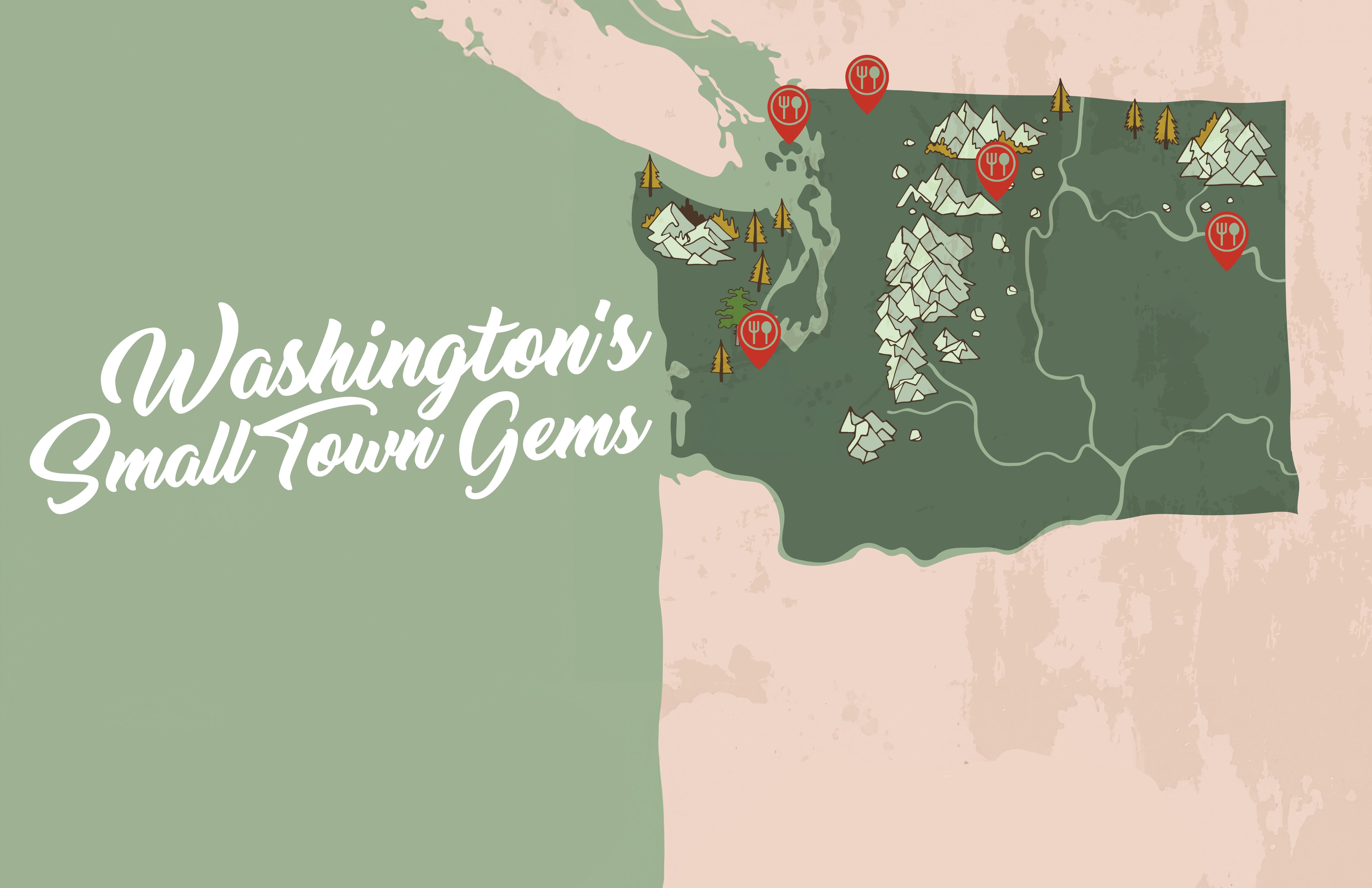
AS THE WEATHER WARMS UP AROUND US, Washingtonians get the irresistible itch to explore, and the Evergreen State becomes a playground for the adventurous. But as any seasoned adventurer knows, half the fun is getting there. In our travels around the state of Washington, we’ve discovered some hidden gems — fantastic restaurants, bistros, and cafes hidden in small towns or rural locations.
While nearly every small town has a favorite haunt for locals, we have scoured the state to find places that are worth taking a day trip to visit. Reviewers of these gems say that they’re worth traveling for, not only for the fun atmosphere and great service, but also because the food is uncommonly delicious. As with all Washington Grown–featured restaurants, these restaurants prioritize using locally grown vegetables, fruits, wines, meats, and more.
2 WASHINGTON GROWN MAGAZINE APRIL 2024




LEFEVRE STREET BAKERY & CAFE — MEDICAL LAKE
While some customers have trouble pronouncing their name, everyone can agree on one thing: Lefevre Street Bakery & Cafe in the tiny community of Medical Lake makes the most delicious pastries for miles around. Owner Victoria Shoemaker and her team make all their breads and pastries from scratch, using the freshest Washington ingredients to make delicious, real food.
The stars of the show are their counter-display pastries like giant cinnamon rolls, flaky chocolate croissants, and a delightfully light carrot cake to go along with a hot latte. But the cafe also offers full menus for breakfast, lunch, and dinner —
complete with dishes like scratch-made biscuits and gravy, quinoa salad, and a fantastic Cuban sandwich.
“We like to be here and present with people and give them something familiar to come back to,” said Shoemaker.
CUSTOMER REVIEWS: “It’s nice and relaxed. The prices are great, and the taste is great. I get in here as often as I can.”
“A rustic country environment, and they greet you like family when you come in.”


RANCH HOUSE BBQ AND STEAKHOUSE — OLYMPIA
Tucked away on the side of Route 8, in the heavily wooded base of Capitol Peak about 13 miles west of Olympia, the quiet and serene exterior of Ranch House BBQ and Steakhouse is deceiving. While the outside is quiet and serene, the inside is anything but.
But the fun, lively, and family-friendly environment is just the beginning of Ranch House’s appeal. People flock here because owner Amy Anderson is a certified BBQ genius; she has won five state championships and a world championship in Ireland in 2000. Not only are their smoked meats all sourced locally, but they’re also smoked with applewood and cherrywood from Anderson’s father’s farm in Eastern Washington.
“Being nationally recognized is great, but being locally recognized as the best BBQ in western Washington is even better,” said Anderson. “If it’s on the menu, it’s local — I have a very small menu, which means we’ve got to be good at everything.”
CUSTOMER REVIEWS:
“The food is fantastic every time.”
“You’re gonna eat good. We drive 45 minutes to eat here each week.”
BLUEBERRY HILLS FARM AND RESTAURANT — MANSON
Located on the banks of Lake Chelan, Hills is a farmhouse-style restaurant that started as a fruit stand. Owner Kari Sorensen, whose great-great-grandparents homesteaded the land in the early 1900s, led the effort to convert the old barn into a restaurant in 2002. When they opened, she said she was scared that nobody would drive the 2 miles from downtown Manson to visit the restaurant. But in the years since, Blueberry Hills has become a destination for fruit lovers from around the world.
“To me, food is love,” said Sorensen. “If you’re looking for an experience — and really great food — it’s worth the drive. It’s a really special place.”

The menu focuses on “down-home scratch country cooking,” with blueberry-inspired dishes like a blueberry blintz and burgers with blueberry mayo. In addition to a great meal, you can spend time in the blueberry fields, picking berries to take home and enjoy all week.
CUSTOMER REVIEWS:
“This is a staple for our family! The food is delicious, and the service is great.”
“You can sample their blueberry juice while you wait in line — it’s terrific!”
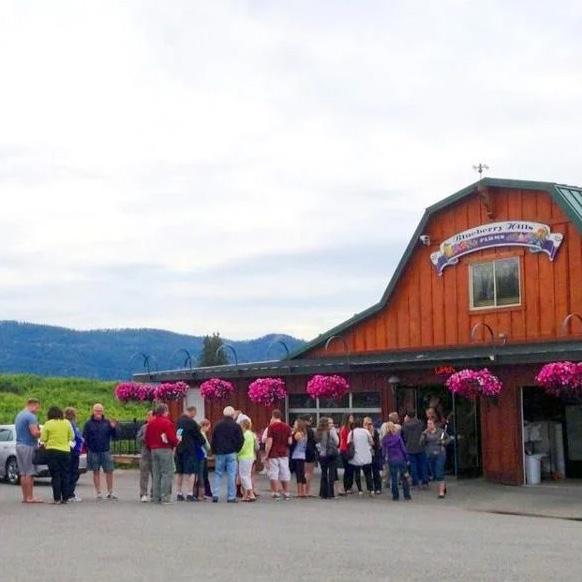

4 WASHINGTON GROWN MAGAZINE APRIL 2024



LYNDEN DUTCH BAKERY — LYNDEN
For nearly 120 years, the Lynden Dutch Bakery has been serving the small Whatcom County town delicious baked goods made from scratch. While they offer typical treats and pastries like donuts and muffins, it’s their Dutch specialties that make this place worth the drive. You can get almond sticks, speculaas cookies (a sort of spiced shortbread), oliebollen (a sort of Dutch beignet), boterkoek (Dutch butter cake), and stroopwafel (a thin, filled waffle cookie).
“There were a lot of Dutch immigrants that settled here, in one of the best berry-growing regions of the world,” said owner Chad Simmons. “With all the availability of fresh fruit here, we’re most known for our pies.”
CUSTOMER REVIEWS:
“This is my favorite place to take the kids!”
“They’ve got an ancient oven that’s been baking forever — just such a cool part of Lynden history. They’ve made it feel modern but still the traditional feel.”
VITA’S WILDLY DELICIOUS — LOPEZ ISLAND
Only one of the restaurants on our list this year requires a ferry ride to reach, but that’s not the only thing that makes Vita’s Wildly Delicious unique. Located on Lopez Island, Vita’s is a seasonal destination for anyone exploring the San Juan Islands. With live music and a rotating menu, Vita’s focuses on using the freshest ingredients, grown right on the island. The restaurant is open seasonally, from mid-May through September.
During those months, Vita's is only open for dinner on Tuesdays and Fridays, so locals know to build their calendar around a night out at Vita’s. Customers rave about the weekly pizza night, when owner Bruce Botts and team make pizzas in a small, artisanal wood-fired pizza oven. But they have also done paella nights, wine tastings, and flamenco dancing.
“In my mind, it’s not really a restaurant or a cafe,” said Botts. “It’s more of a bistro with prepared food. People just really enjoy it.”
CUSTOMER REVIEW:
“It fits with the vibe of the island really well! Live music, happy people, great food.”
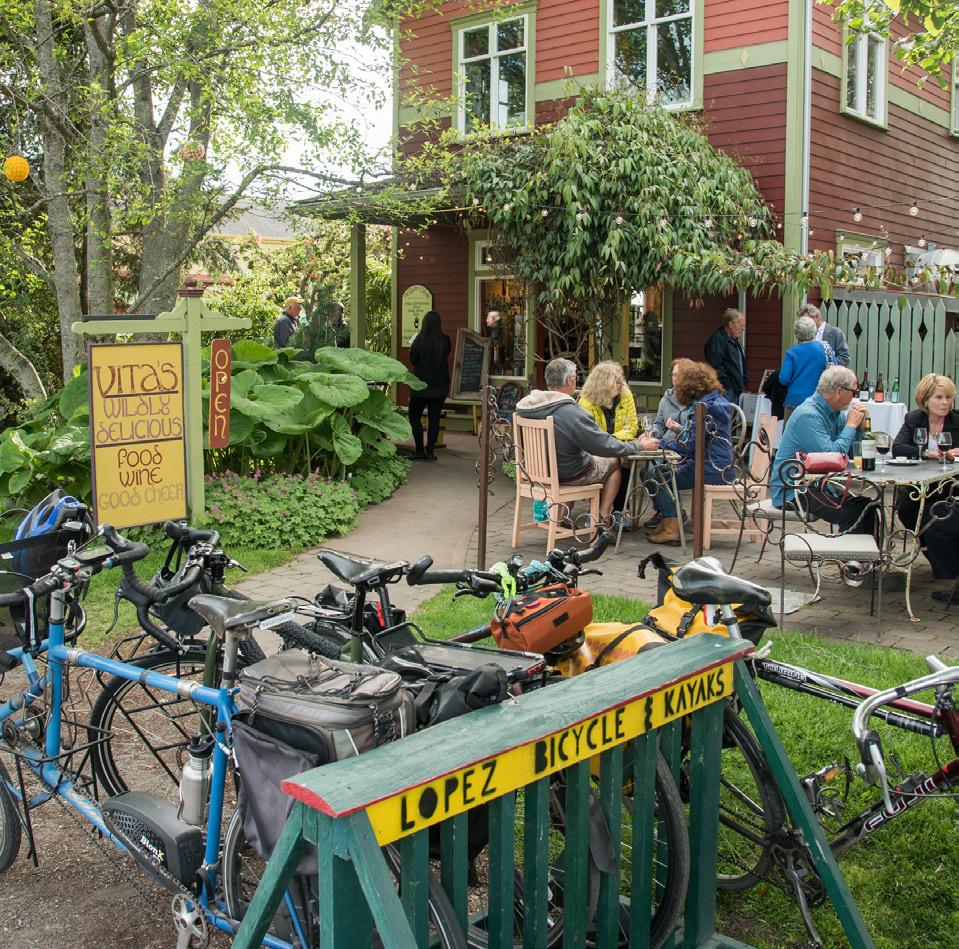

WASHINGTON GROWN MAGAZINE APRIL 2024 5

chateau summer at the
After nearly six decades, Washington state's oldest winery is still leading the way.
When talking about Washington wines, the standard line is to take note of how young the wine industry is here. “Look at how much the industry has grown here in just a few decades,” people will say, which no doubt is true. To the casual observer, it seems like everywhere you look throughout the Columbia Basin, there’s a new boutique winery opening or a new vineyard being planted. “Exponential growth,” the accountants would call it.
But the seeds of Washington’s wine industry were planted long before the current period of international renown. Among all those vibrant new upstarts, Chateau Ste. Michelle stands as the oldest winery in the state and continues to dominate after more than 50 years of winemaking in the Evergreen State.
Built on the 1912 estate owned by Seattle lumber baron Frederick Stimson, the winery’s roots date back to the

continued on page 8
6 WASHINGTON GROWN MAGAZINE APRIL 2024
CHATEAU STE. MICHELLE


"Their family came to Red Mountain on a coin flip. But their success here has nothing to do with chance."
Read more at wagrown.com

"Her parents were farmworkers.
Now she owns the farm."
Read more at wagrown.com

Watch the show online or on your local station
KSPS (Spokane)
Mondays at 7:00 pm and Saturdays at 4:30 pm ksps.org/schedule/
KWSU (Pullman)

"We've got a responsibility to take care of it for future generations."
Read more at wagrown.com





Fridays at 6:00 pm nwpb.org/tv-schedules/
KTNW (Richland)
Saturdays at 1:00 pm nwpb.org/tv-schedules
KBTC (Seattle/Tacoma)
Saturdays at 6:30 am and 3:00 pm kbtc.org/tv-schedule/
KIMA (Yakima)/KEPR (Pasco)/KLEW (Lewiston)
Saturdays at 5:00 pm kimatv.com/station/schedule / keprtv.com/station/schedule klewtv.com/station/schedule
KIRO (Seattle)
Saturdays at 7:30 am and Mondays at 2:30 pm or livestream Saturdays at 2:30 pm on kiro7.com kiro7.com
NCW Life Channel (Wenatchee)
Check local listings ncwlife.com
RFD-TV
Thursdays at 12:30 pm and Fridays at 9:00 pm (Pacific) rfdtv.com/
*Times/schedules subject to change based upon network schedule. Check station programming to confirm air times.
WASHINGTON GROWN MAGAZINE APRIL 2024 7 wagrown.com @wagrowntv Find more great stories at wagrown.com
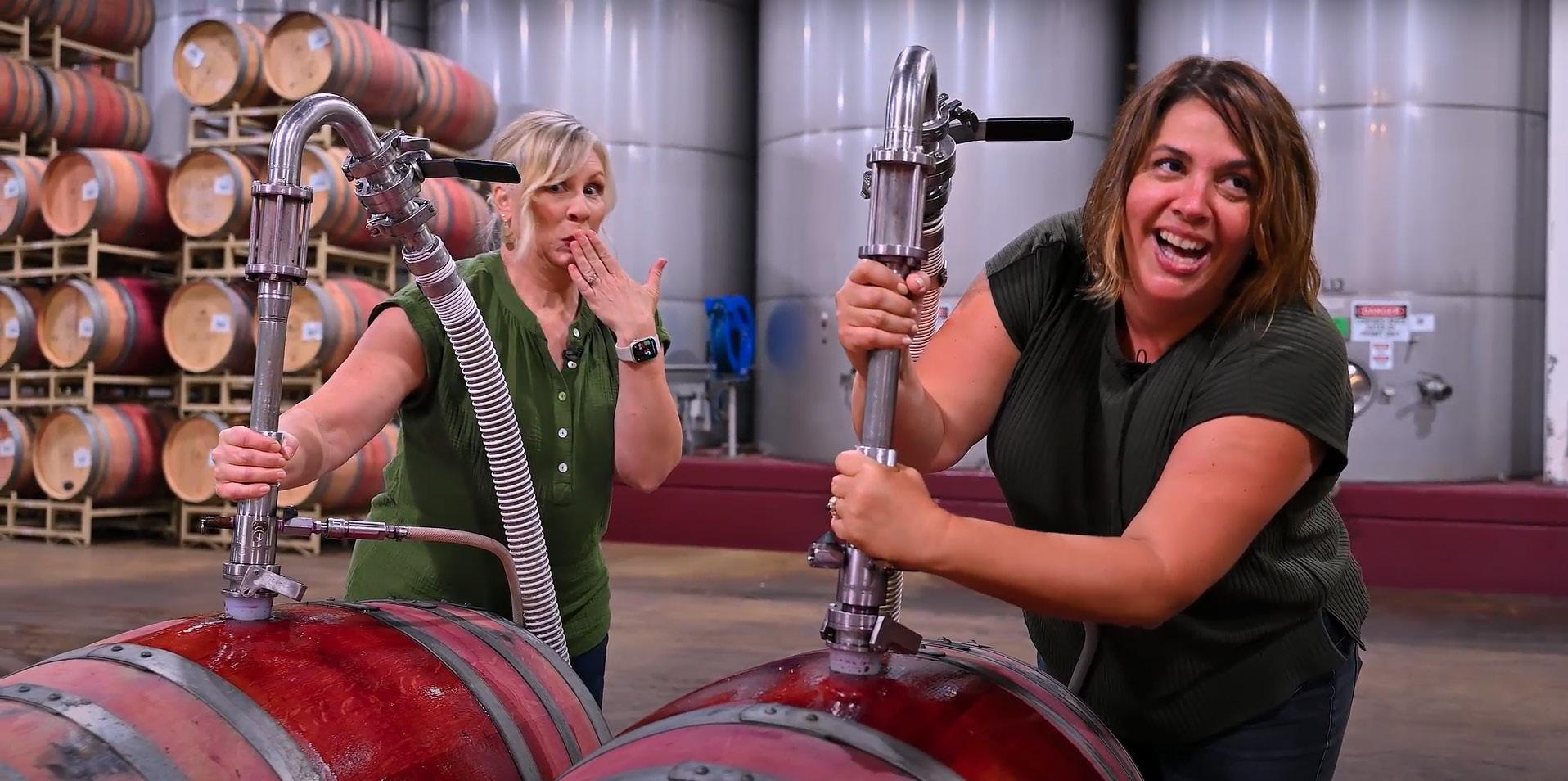
Repeal of Prohibition. But things really got started in 1967, when a new line of premium vinifera wines was introduced under the name Ste. Michelle Vintners, in a project that was overseen by legendary winemaker André Tchelistcheff.
In the years since, Chateau Ste. Michelle has grown into an industry giant, producing approximately 7.3 million cases of wine annually, which makes it the eighth largest wine marketer in the United States. The company was purchased in the first half of 2023 for $1.3 billion in cash by Sycamore Partners, a New York–based private equity firm. Somehow, despite all that growth and its massive volume of sales, the company keeps producing excellent wines, and it has been listed 18 times among the top 100 wines in the world by Wine Spectator.
“We’re in 50 states and 60 countries,” said Katie Nelson, vice president of winemaking at Chateau Ste. Michelle, when the Washington Grown TV crew visited in Season 11. “My favorite part of what I do is knowing that someone will be drinking it in another country on vacation.”
A large part of Chateau Ste. Michelle’s success, and indeed any grower’s success, comes down to the climate and conditions where they grow their products. For instance, Eastern Washington’s very hot and dry
summers make grapes ripen easily, resulting in a higher sugar level, which in turn converts to alcohol. In Chateau Ste. Michelle’s Horse Heaven Hills vineyard, the prevailing wind also contributes to the flavor of the wines.
“It’s usually very windy in this area, which causes the vine to sort of shut down to prevent water loss, so it makes for very concentrated, bold wines,” said Nelson as she toured the vineyard with Washington Grown host Kristi Gorenson. “I’ve been making wine for almost 30 years, and no two vintages are ever the same. Mother Nature always throws curveballs, so it’s always a challenge.”
Many mistakenly think that wines from large wineries like Chateau Ste. Michelle must all taste identical. But the taste of the wine is affected not only by the climate, soil conditions, and sun exposure where the grapes are grown, but also by the oak barrel the wine is stored in after fermenting. In most cases, wine is stored in oak barrels for months or even years while the oak adds oxygen, tannins, and a depth of flavor to the wine.
“We typically taste from each barrel, because each barrel imparts different flavors, depending on the wood staves,” said Nelson. “I love how [wine] brings everyone together — it brings science and art and farming together. No two days are ever the same in the wine business.”
8 WASHINGTON GROWN MAGAZINE APRIL 2024
Katie Nelson (right) and Washington Grown host Kristi Gorenson fill oak barrels with wine at Chateau Ste. Michelle's Canoe Ridge Estate facility.


ENTER TO WIN!
Visit our website and sign up to be entered into a drawing for a $25 gift certificate to Duke's Seafood!
*Limit one entry per household

CHATEAU
WINE
GRAPES
BAKERY
SEAFOOD
VIETNAM
IMPORT
WASHINGTON
SMALL TOWN
VINEYARD

FINISH

DID YOU KNOW
Washington shares the same latitude as top wine regions in Europe (Burgundy, Rhone, and Bordeaux). With the northern latitude and a growing season that sees up to 17 hours of sunlight a day, Washington's geography and climate deliver a perfect balance of New World fruit with Old World structure.
START
Duke's Seafood is a Seattle institution making Washingtongrown fruits and vegetables the stars of the show.
DUKE'S SEAFOOD CAPITOL HILL
IT'S NOT EXACTLY YACHT CLUB, BUT THE FOOD WILL MAKE YOU THINK IT IS.

NOT EXACTLY A THE THINK

While Duke’s Seafood is now well known for its sustainable seafood restaurants throughout the greater Puget Sound area, its story began in 1977, when Duke Moscrip opened a casual bar and grill on Lower Queen Anne Hill in Seattle. As Duke’s Bar & Grill became known for its clam chowder and fish and chips, Moscrip took action, opening a second Seattle location the following year.
Now, nearly a half-century later, Duke’s operates eight spaces in the area — an event venue plus seven seafood restaurants — including its South Lake Union eatery, which opened in 2019 in the same location where the shortlived, high-end Duke’s Yacht Club did in 1990.
When Duke’s Yacht Club didn’t have the same success as his other restaurants, Moscrip and his team quickly realized that the charm of Duke’s is its high-quality food, not a fancy atmosphere — and this ethos continues today. While the South Lake Union restaurant boasts gorgeous waterfront views and mostly organic, local ingredients, the vibe is decidedly relaxed.
“We don’t like to take ourselves too seriously here,” said Executive Chef Amanda Herrera, “but we’re serious about serving really good food, sourcing well, and giving you great drinks.”
As for sourcing, Duke’s is committed to serving fully sustainable seafood, from locally sourced shellfish to wild-caught salmon, cod, and halibut; organic chicken and eggs; local, grassfed beef; and Washington-grown produce at all its locations.
“Using more local ingredients, you do taste the difference,” Herrera said. “It’s nice to know that it’s not coming from across the country to get to you — you know what you’re serving.”
Customers notice that freshness, and it keeps them coming back.
“It’s the one place I go when I want a really, really good meal that’s fresh, that’s high quality,” said one diner, who was eating on the patio overlooking the water. “Duke's has got to be the quintessential Seattle seafood place to go to.”
When the Washington Grown team visited Duke’s, local asparagus was the seasonal vegetable, but Herrera was already dreaming about the additional Washington produce that would be in season in the coming months.
“I’m really looking forward to zucchini season,” she said. “When the berries come into play here in the summertime, those will be featured on some seafood dishes as well.”
The restaurant also offers a boutique wine list comprising only Washington wines, including ones from Chateau Ste. Michelle, Mark Ryan Winery, and Treveri.
“We have cultivated relationships with a lot of Washington wineries,” Herrera said. “The large variety that we have here in the state — of the wines that we actually produce here — it really lends itself to be able to go with a variety of different foods.”
On the patio, one customer took a bite from a steaming bowl of fettuccine with wild salmon.
“It just feels like home when you eat it — honestly,” she said. “It’s just so good. We want to try everything because it all looks so good.”
Another diner laughed as she finished her meal.
“We did have stuffed shrimp, but now I’m stuffed,” she said.

WASHINTON GROWN MAGAZINE APRIL 2024 11
DUKE'S SEAFOOD CAPITOL HILL
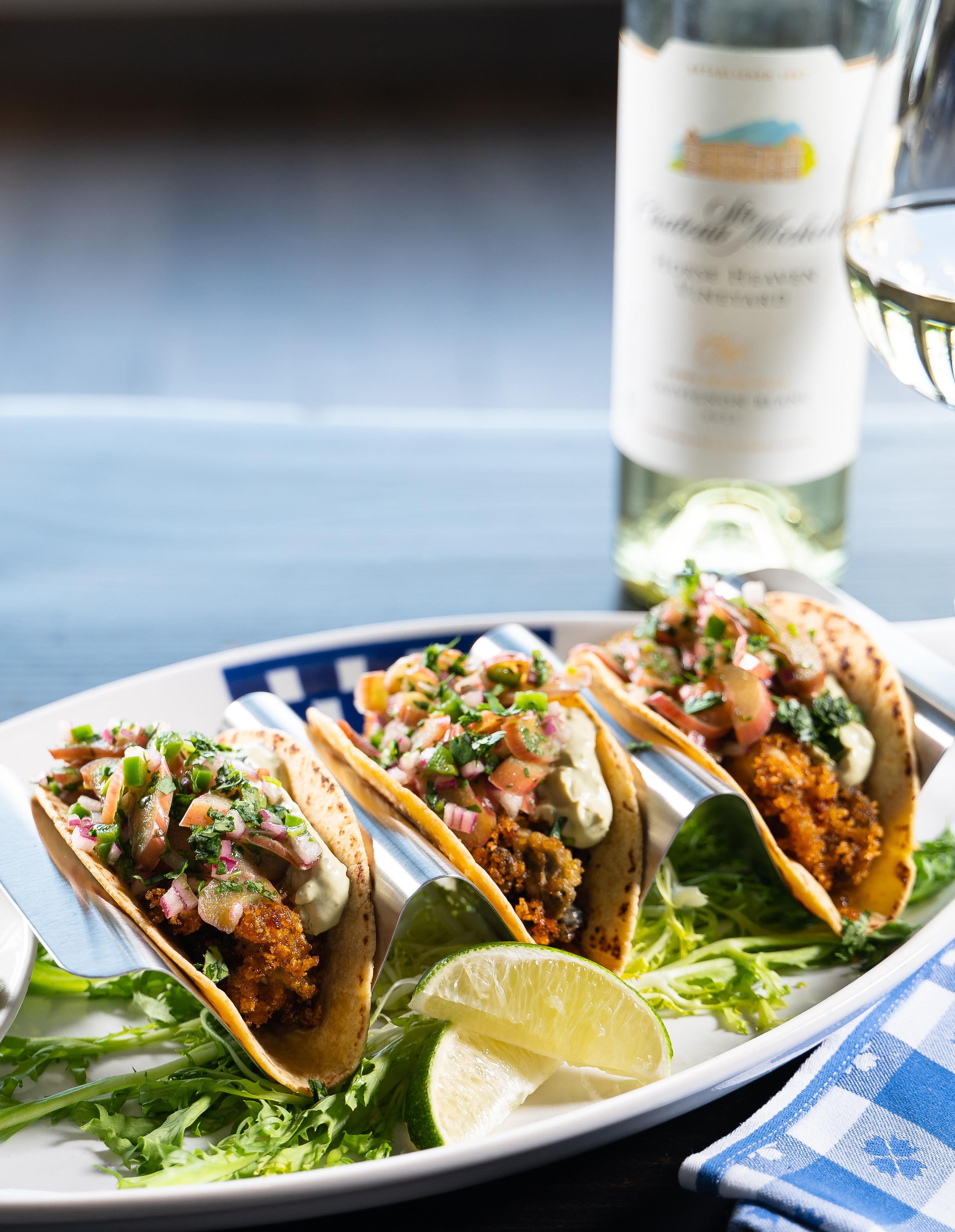
PAN-FRIED
OysterTacos

Ingredients for Pickled Rhubarb Salsa
• 2 cups rhubarb, sliced ⅛” thick
• 1 tablespoon honey
• 1.5 cups seasoned rice wine vinegar
• 1 cup water (warm)
• 1/2 red onion, diced
• 1/2 cup cilantro
• 2 tablespoons diced jalapeño
• ½ teaspoon ground cumin
• 1 tablespoon olive oil
• 3 teaspoons kosher salt
INGREDIENTS
Ingredients for Avocado Lime Crema
• 1 cup sour cream
• 2 limes
• 1 avocado
Ingredients for Oyster Tacos
• 16 large oysters, or 2 10 oz. jars of fresh-shucked oysters
• 2 cups olive oil
• 1.5 cups cornflake crumbs
• 1 teaspoon kosher salt
• 8 tortillas of your choice (no larger than 6”)
Complexity: Easy • Time: 60 minutes • Serves: 2-4
Rich, salty pan-fried oysters ... bright and acidic pickled rhubarb salsa ... smooth avocado crema ... all wrapped up in a warm, toasted tortilla! These tacos are a favorite for regulars at Duke's Seafood in Seattle, and you'll love them at home too! Make sure to make your rhubarb salsa and crema in advance so the flavors have time to deepen and intensify.
Pickled Rhubarb Salsa
In a bowl, mix the warm water and honey. Stir to dissolve, then add in the rice wine vinegar and 1 teaspoon of the salt. Add in the sliced rhubarb and let it sit in the fridge for 24 hours.
Strain the rhubarb mixture and add it to a mixing bowl. Add the red onion, cilantro, jalapeño, cumin, olive oil and the remaining salt to complete the salsa.
*Chef’s note — this salsa can be made up to three days ahead of time.
Avocado Lime Crema
Combine sour cream, avocado, and juice of 2 limes in a food processor and blend until smooth. Keep chilled until it’s time to plate the tacos.
Oysters
In a baking dish or mixing bowl, combine the cornflake crumbs and salt. Mix well.
Shuck the oysters or open the jar of fresh oysters.
Bread each oyster in the cornflake mix and set aside on a sheet pan.
In a sauté pan, heat the oil over medium-high heat.
Carefully add the breaded oysters to the sauté pan and cook on both sides until golden brown, one minute on each side to start.
Remove from the oil and let them rest on a plate with a paper towel.
Assemble the Tacos
Toast your tortillas on a dry skillet until they brown. Add oysters, salsa, crema, and a squeeze of lime.
Did you know that the Columbia Valley is renowned around the world for its Riesling grapes? The dry climate, with long sunny days and cool evenings, creates ideal conditions for intense aroma and flavor development.
Riesling is a very "food-friendly" wine and would be a perfect complement for pan-fried oyster tacos.

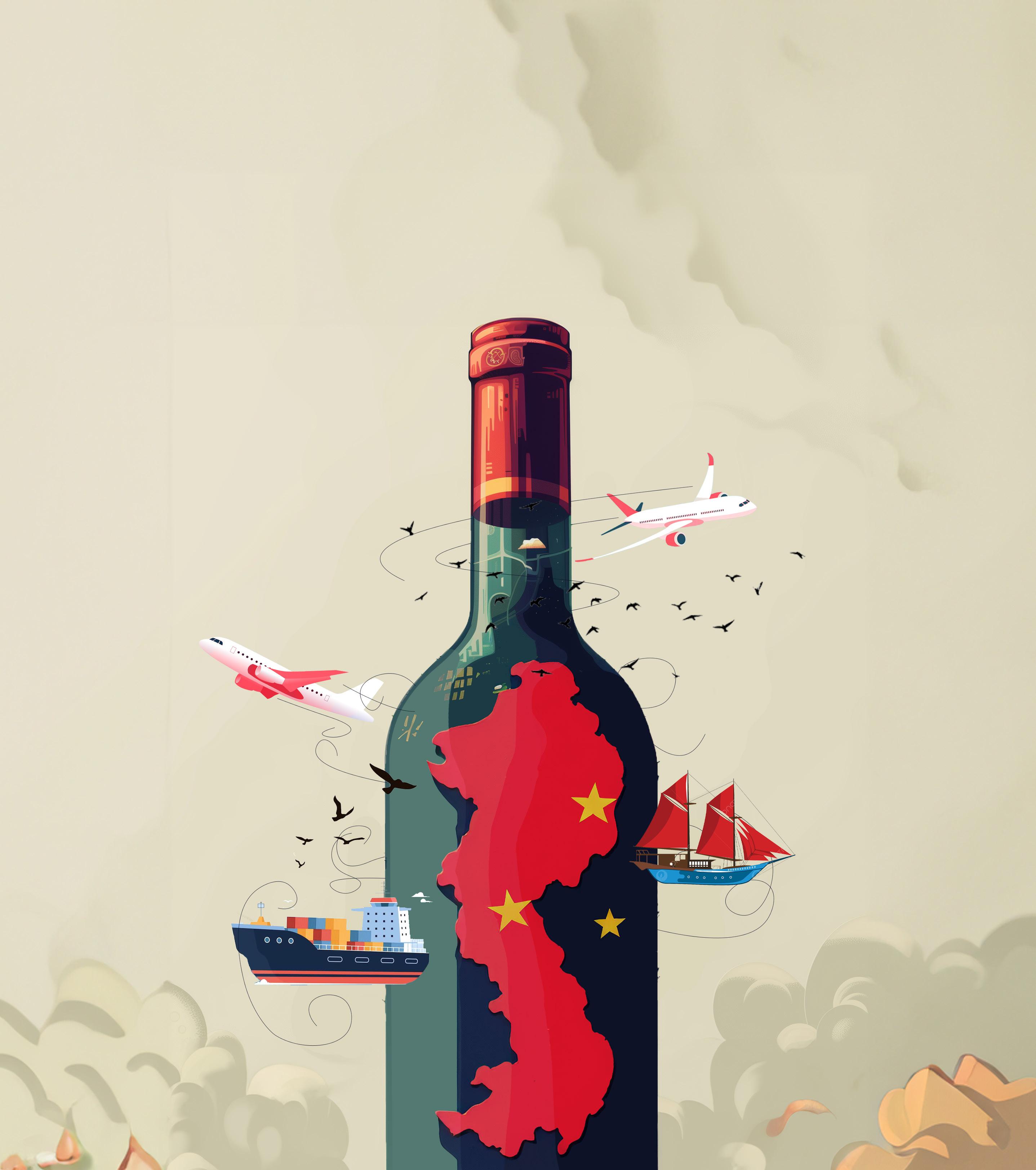
the from the
Northwest Far East to
How have Washington's world-famous wines gotten to Vietnam? The process has taken 10 years.

In a cozy, wood-walled wine store in Vietnam’s Ho Chi Minh City, bottles of imported Washington-grown wines line the shelves, and owner Ngoc Dinh smiles as she slowly pours a glass of merlot from a bottle wrapped with a white cloth napkin.
“I’ve been working with wine since I was young — very young,” she says, adding that she entered the wine business more than 30 years ago. Dinh is the owner of Phú & Em Group, a food and beverage importer and distributor in Vietnam that she operates with her two sons.
While beer is still Vietnam’s most popular alcoholic beverage by far, wine is growing in popularity, and Dinh’s son Tran Thanh Sang credits her for being one of the first people to import wine to the country.
“Before 1992 in Vietnam, they didn’t know anything about wine,” Sang said. “My mom was the first lady importing wine to Vietnam. I’m really proud of my mom.”
Washington wines are becoming more popular internationally, and in 2021, wineries in the state exported wine to more than 60 countries, according to the Washington State Wine Commission. Sang enjoys that Vietnamese people are just beginning to learn about Washington wine, and he is glad Phú & Em can introduce them to it.
“Ten years ago, nobody knew about Washington wine,” he said. “When they
PHÚ & EM HO CHI MINH CITY
talked about American wine, they just talked about Napa Valley.”
That is clearly changing. Jean-Bernard Baudron, Phú & Em’s French sommelier wine specialist, points to a bottle of sparkling Brut wine imported from Chateau Ste. Michelle in Woodinville, Washington. “I love this wine very much, especially this brand.”
He pours a flute of the bubbling liquid and holds it up to the light.
“Talking is good, but tasting is much better,” he says, taking a sip.
He notes the drink’s pale yellow color and small bubbles, which are a sign of a highquality sparkling wine. “Very fresh, very citrusy — green apple, a lot of freshness,” he said. “Very nice texture. The bubbles are creamy; it’s very smooth.”
Washington’s long summer days and cool nights, its varied climate across the state, and its unique soil make it an ideal grapegrowing location, and it shows in the wine.
“Washington state is producing very amazing, good wine, thanks to the climate,” said Baudron, “which gives a lot of freshness, a lot of elegance to the wine.”
From Washington vineyards to a tiny wine store nestled in Vietnam’s most populated city, wine lovers worldwide seem to agree.
WASHINGTON GROWN MAGAZINE APRIL 2024 15

If you’re interested in being introduced to the world of wine, Washington is a great place to call home. But even with the benefit of having hundreds of wineries practically in our backyard, it can be intimidating to get started with wine. Luckily, Rapport Wine Bar in Seattle’s Capitol Hill is here to help, offering self-pour wines on tap so you can try a wide variety of vintners and pairings.
“We’re pretty much the first place in Washington state offering wines on tap,” said owner David Clawson. “We have some 80 wines, so no lack of choices — some amazing Washington wines, but also really the whole world of wine. Wines can be a bit intimidating, a little stuffy, hard-to-pronounce names. We want wine to be fun, relaxing, and a good time.”
Throughout the bright and airy space, customers can wander around the display cases until they spot a wine that they would like to try. Each wine bottle is connected to a pour spout, and the customer can choose to dispense a “taster pour,” half glass, or full glass.
taste some of the world's best wines
“This really allows your imagination to go wild and sample wines from all over the world,” said Washington Grown TV host Tomás Guzmán when the crew visited Rapport in Season 11.
One of the display cases, which Clawson calls the high-end real estate section, contains bottles that are typically sold for hundreds of dollars, even up to $500. People can choose to dispense a taster pour and have a chance to sample those high-end wines.
In addition to the wines, Rapport offers an all-day menu of small bites, salads, cheeses, and desserts, along with a weekend brunch menu.
“It’s all about socializing and being a third place for fun and friends,” said Clawson. “People in Washington are curious about wine — as a state, we’re known for our wines, but all these up-and-coming smaller producers create a lot of excitement around Washington wine.”

The Washington Grown project is made possible by the Washington State Department of Agriculture and the USDA Specialty Crop Block Grant program, through a partnership with the state's farmers.
Marketing Director
Brandy Tucker
Editor-in-Chief
Kara Rowe
Editor and Art Designer
Jon Schuler
Assistant Editors
Trista Crossley
Elissa Sweet Writers
Jon Schuler
Elissa Sweet
Images
Tomás Guzmán
Jon Schuler
Chateau Ste. Michelle
Shutterstock
Washington Grown
Executive Producers
Kara Rowe
David Tanner
Chris Voigt
Producer
Ian Loe

Hosts
Kristi Gorenson
Tomás Guzmán
Val Thomas-Matson

































